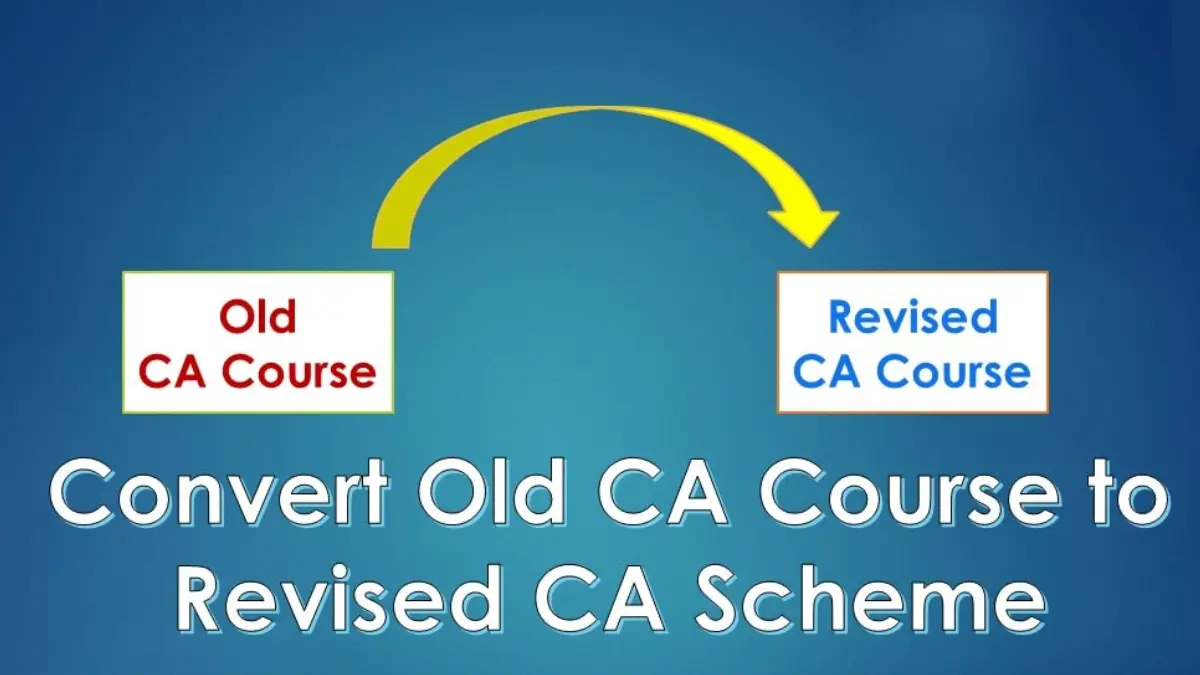In this piece of article, we are sharing the new UP Board Class 11 Biology Syllabus. If you don’t know the latest change in the syllabus, let us tell you that UP Board has reduced the syllabus for 2023-24 by 30%. The topics removed from the syllabus and the marking scheme is available here in this article. For Hindi medium students, we have separately given the marking scheme and syllabus.
If you want to see the UP Board Syllabus of other subjects, then visit CA Wizard. There you will find all the resources available for class 11 and 12 and Chartered Accountancy course students. We aim to help you excel in your academics and lead a successful career. You can see the best career options and make the right choice for your career.
Also Know How to Become CA in India
Marking Scheme as per UP Board Class 11 Biology Syllabus 2023-24 (in English)
| S.No | Unit | Marks |
| 1 | Diversity in Living World | 7 |
| 2 | Structural Organisation in Animals and Plants | 12 |
| 3 | Cell: Structure and Function | 15 |
| 4 | Plant Physiology | 18 |
| 5 | Human Physiology | 18 |
| Total | 70 |
UP Board Class 11 Biology Syllabus 2023-24 (in English)
The Biology Syllabus of UP Board Class 11 is available below. You can download the PDF file of the same from the link below.
Download UP Board Class 11 Biology Syllabus (English medium)
After saving the PDF, directly move over to page number 15 in the PDF for the Biology Syllabus.
Unit I: Diversity of Living Organisms
Chapter 1: The Living World
Topics Covered in Syllabus
What is living? Biodiversity; Need for classification; Three domains of life; the concept of species and taxonomical hierarchy; binomial nomenclature.
Deleted Topics
Taxonomy and Systematics, tools for the study of taxonomy museums, zoological parks, herbaria, botanical gardens
Chapter 2: Biological Classification
Topics Covered in Syllabus
Five kingdom classification; Salient features and classification of Monera, Protista, and Fungi into major groups: Lichens, Viruses, and Viroids.
Chapter 3: Plant Kingdom
Topics Covered in Syllabus
Salient features and classification of plants into major groups – Algae, Bryophyta, Pteridophyta, Gymnospermae
Deleted Topics
Angiospermae (three to five salient and distinguishing features and at least two examples of each category); Angiosperms – classification up to class, characteristic features, and examples.
Chapter 4: Animal Kingdom
Topics Covered in Syllabus
Salient features and classification of animals, non-chordates up to phyla level, and chordates up to class level (three to five salient features and at least two examples of each category). (No live animals or specimen should be displayed.)
Unit II: Structural Organisation in Animals and Plants
Chapter 5: Morphology of Flowering Plants
Topics Covered in Syllabus
Morphology of inflorescence and flower, description of 01 families, Solanaceae or Liliaceae. (to be dealt with along with the relevant experiment of the Practical Syllabus).
Deleted Topics
Morphology of different parts of flowering plants: root, stem, leaf, fruit and seed, and work.
Chapter 6: Anatomy of Flowering Plants
Deleted Topics
Anatomy and functions of different tissues and tissue systems in dicots and monocots. Secondary growth.
Chapter 7: Structural organization in animals
Topics Covered in Syllabus
Animal Tissues
Deleted Topics
Morphology, anatomy, and function of different system (digestive, circulatory, respiratory, nervous and reproductive) of an insect (cockroach)
Unit III: Cell: Structure and Function
Chapter 8: Cell-The Unit of Life
Topics Covered in Syllabus
Cell theory and cell as the basic unit of life: Structure of prokaryotic and eukaryotic cells; Plant cell and animal cell; cell envelope; cell membrane, cell wall; cell organelles – structure and function; endomembrane system, endoplasmic reticulum, golgi bodies, lysosomes, vacuoles; mitochondria, ribosomes, plastids, microbodies; cytoskeleton, cilia, flagella, centrioles (ultrastructure and function), nucleus.
Deleted Topics
Nuclear membrane, chromatin, nucleolus
Chapter 9: Biomolecules
Topics Covered in Syllabus
Chemical constituents of living cells: biomolecules, structure, and function of proteins, carbohydrates, lipids, nucleic acids; Enzymes- types, properties, enzyme action.
Chapter 10: Cell Cycle and Cell Division
Topics Covered in Syllabus
Cell cycle, mitosis, meiosis, and their significance
Unit IV: Plant Physiology
Chapter 11: Transport in plants
Deleted Topics
Movement of water, gases, and nutrients; cell to cell transport, diffusion, facilitated diffusion, active transport; plant-water relations, imbibition, water potential, osmosis, plasmolysis; long-distance transport of water – Absorption, apoplast, symplast, transpiration pull, root pressure, and guttation; transpiration, opening and closing of stomata; Uptake and translocation of mineral nutrients – Transport of food, phloem transport, mass flow hypothesis.
Chapter 12: Mineral Nutrition
Deleted Topics
Essential minerals, macro- and micronutrients and their role; Deficiency symptoms; Mineral toxicity; Elementary idea of hydroponics as a method to study mineral nutrition; nitrogen metabolism, nitrogen cycle, biological nitrogen fixation.
Chapter 13: Photosynthesis in Higher Plants
Topics Covered in Syllabus
Photosynthesis as a means of autotrophic nutrition; site of photosynthesis, pigments involved in photosynthesis (elementary idea); photochemical and biosynthetic phases of photosynthesis; cyclic and non-cyclic photophosphorylation; chemiosmotic hypothesis; photorespiration; C3 and C4 pathways; Factors affecting photosynthesis.
Chapter 14: Respiration in Plants
Topics Covered in Syllabus
Exchange of gases; cellular respiration – glycolysis, fermentation (anaerobic), TCA cycle and electron transport system (aerobic); energy relations – number of ATP molecules generated; amphibolic pathways; respiratory quotient.
Chapter 15: Plant – Growth and Development
Topics Covered in Syllabus
Growth regulators – auxin, gibberellin, cytokinin, ethylene, ABA
Deleted Topics
Seed germination; phases of plant growth and plant growth rate; conditions of growth; differentiation, dedifferentiation and redifferentiation; Sequence of developmental processes in a plant cell, seed dormancy; vernalisation; photoperiodism.
Unit V: Human Physiology
Chapter 16: Digestion and Absorption
Deleted Topics
Alimentary canal and digestive glands, role of digestive enzymes and gastrointestinal hormones; Peristalsis, digestion, absorption and assimilation of proteins, carbohydrates and fats; calorific values of proteins, carbohydrates and fats; egestion; nutritional and digestive disorders – PEM, indigestion, constipation, vomiting, jaundice, diarrhea.
Chapter 17: Breathing and Exchange of Gases
Topics Covered in Syllabus
Respiratory organs in animals (recall only); Respiratory system in humans; Mechanism of breathing and its regulation in humans – exchange of gases, transport of gases and regulation of respiration, respiratory volume; disorders related to respiration – asthma, emphysema, occupational respiratory disorders.
Chapter 18: Body Fluids and Circulation
Topics Covered in Syllabus
Composition of the blood, blood groups, coagulation of blood; composition of lymph and its function; human circulatory system – Structure of human heart and blood vessels; cardiac cycle, cardiac output, ECG; double circulation; regulation of cardiac activity; disorders of the circulatory system – hypertension, coronary artery disease, angina pectoris, heart failure.
Chapter 19: Excretory Products and Their Elimination
Topics Covered in Syllabus
Modes of excretion – ammonotelism, ureotelism, uricotelism; human excretory system – structure and function; urine formation, osmoregulation; regulation of kidney function – renin-angiotensin, atrial natriuretic factor, ADH and diabetes insipidus; the role of other organs in excretion; disorders – uremia, renal failure, renal calculi, nephritis; dialysis and artificial kidney.
Chapter 20: Locomotion and Movement
Topics Covered in Syllabus
Skeleton muscle, contractile proteins, and muscle contraction.
Deleted Topics
Types of movement – ciliary, flagellar, muscular; skeletal system and its functions; joints; disorders of the muscular and skeletal system – myasthenia gravis, tetany, muscular dystrophy, arthritis, osteoporosis, gout
Chapter 21: Neural Control and Coordination
Topics Covered in Syllabus
Neuron and nerves; Nervous system in humans – central nervous system; the peripheral nervous system and visceral nervous system; generation and conduction of nerve impulse; reflex action
Deleted Topics
Sensory perception; sense organs; elementary structure and functions of eye and ear
Chapter 22: Chemical Coordination and Integration
Topics Covered in Syllabus
Endocrine glands and hormones; human endocrine system – hypothalamus, pituitary, pineal, thyroid, parathyroid, adrenal, pancreas, gonads; mechanism of hormone action (elementary idea); role of hormones as messengers and regulators, hypo – and hyperactivity and related disorders; dwarfism, acromegaly, cretinism, goiter, exophthalmic goiter, diabetes, Addison’s disease.
UP Board Class 11 Biology Syllabus for Practical
A: List of Experiments
- Study and description of three locally available common flowering plants, one from each of the families Solanaceae, Fabaceae and Liliaceae (Poaceae, Asteraceae or Brassicaceae can be substituted in case of particular geographical location) including dissection and display of floral whorls, anther, and ovary to show a number of chambers (floral formulae and floral diagrams).
- Study of distribution of stomata in the upper and lower surface of leaves.
- Separation of plant pigments through paper chromatography.
- Study of the rate of respiration in flower buds/leaf tissue and germinating seeds.
- Test for the presence of sugar in the urine.
- Test for the presence of albumin in the urine.
B: Study/Observation of the following (spotting)
- Study of the parts of a compound microscope.
- Study of the specimens/slides/models and identification with reasons – Bacteria, Oscillatoria, Spirogyra, Rhizopus, mushroom, yeast, liverwort, moss, fern, pine, one monocotyledonous plant, one dicotyledonous plant and one lichen.
- Study of virtual specimens/slides/models and identification with reasons – Amoeba, Hydra, liver fluke, Ascaris, leech, earthworm, prawn, silkworm, honeybee, snail, starfish, shark, rohu, frog, lizard, pigeon and rabbit.
- Animal cells (, squamous epithelium, muscle fibers, and mammalian blood smear) through temporary/permanent slides.
- Study of mitosis in onion root tip cells and animal cells (grasshopper) from permanent slides.
- Study of the external morphology of cockroach through virtual images/models. Practical Examination for Visually Impaired Students
Note: Practice notebook and project work will be compulsory to submit at the time of Practical U.P. Board examination.
For Private Students: Which college will be decided as an examination center, the teacher/Principal of that college will be an internal examiner and will provide 50% marks to private students as an internal examiner and remaining 50% marks will be given by the external examiner.
Reduced Practicals:
A-List of Experiments
- Preparation and study of T.S. of dicot and monocot roots and stems.
- To study types of the root (Tap and adventitious); stem (herbaceous and woody); leaf (arrangement, shape, venation, simple and compound).
- Study of osmosis by potato osmometer.
- Study of plasmolysis in epidermal peels (e.g. Rhoeo leaves).
- Comparative study of the rates of transpiration in the upper and lower surface of leaves.
- Test for the presence of sugar, starch, proteins, and fats.
- Test for the presence of urea in urine.
- Test for the presence of bile pigment in urine.
B – Study / Observation of the following (spotting)
- Study of tissues and diversity in shapes and sizes of the plant cell(palisade cells, guard cells, parenchyma, collenchyma, sclerenchyma, xylem, phloem)
- Study of different modifications in roots stems and leaves.
- Study and identification of different types of the inflorescence.
- Study of imbibition in seeds/raisins.
- Observation and comments on the experimental set up for showing: a) Anaerobic respiration b) Photoperiodism c) Effect of apical bud removal d) Suction due to transpiration
- Study of the human skeleton and different types of joints with the help of virtual images/models only.
Marking Scheme as per UP Board Class 11 Biology Syllabus 2023-24 (in Hindi)
| इकाई | शीर्षक | पूर्णांक |
| 1 | सजीव जगत की विविधता | 7 |
| 2 | जंतुओं और पौधों की संरचनात्मक संघटना | 12 |
| 3 | कोशिका: संरचना और कार्य | 15 |
| 4 | पादप कार्यिकी | 18 |
| 5 | मानव कार्यिकी | 18 |
| योग | 70 |
UP Board Class 11 Biology Syllabus 2023-24 (in Hindi)
You can download the Biology Syllabus PDF of UP Board Class 11 in the Hindi medium from the below-given link.
डाउनलोड उत्तर प्रदेश बोर्ड कक्षा 11 जीव विज्ञान पाठ्यक्रम
Directly move over to page 88 in the PDF for Biology Syllabus.
UP Board Class 11 Biology Exam Preparation Tips
Before starting exam preparation, mark the revised syllabus in all your subject books and notebooks. The UP Board Class 11 Biology syllabus is given above, while you can check out the syllabus of other subjects on CA Wizard.
After that, you should note the marking scheme and make a study plan for the time left before exams.
Everything is of importance in the biology subject—the definitions, theory concepts, processes, practicals, diagrams, etc. So you need to focus on all the parts to score good marks. You must also focus on the terminologies of the subject.
Students Also Ask
Q1. Is the Biology Syllabus reduced for class XI UP board?
Ans. Yes, UPMSP has announced a 30% cut in the UP Board Class 11 Biology Syllabus.
Q2. Which chapters are removed from the biology syllabus?
Ans. Chapters 6, 11, 12, 13, 14, and 16 are entirely removed from the syllabus, while topics from other chapters are also removed. You can see the chapter-wise syllabus in this article.
Q3. How to download the latest UP Board Class 11 Biology Syllabus?
Ans. You can download the biology syllabus from this CA Wizard article.
Q4. Which book should be used for study for the class 11 Biology exam?
Ans. UP Board recommends NCERT Books for class 11 Biology students.










